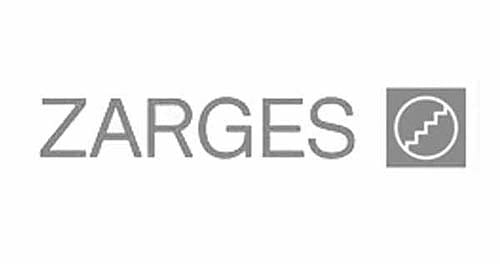
Legal requirements for packaging hazardous goods
Hazardous goods (or dangerous goods) packaging is highly regulated due to the requirements for protecting people, property and the environment.
Hazardous goods packaging regulations ensure that packaging safely contains dangerous materials during transport. Suitable packaging can help prevent accidents, such as fires, explosions, or spills, through the correct use of materials, proper labelling, and classification. Non-compliance can lead to significant risks, including severe injuries, environmental contamination, legal penalties, and damage to a business’s reputation.
GWP Group offers a limited range of packaging for hazardous goods. As part of the Macfarlane Group, we can also assist customers in sourcing a range of packaging options tailored to specific applications.

Important note:
This page aims to provide a comprehensive list of regulations that could potentially apply to hazardous goods packaging. It also indicates which regulations may affect the packaging that you purchase or are looking to source from GWP Group, and areas where we are currently unable to assist.
Please also note that, as all scenarios and applications vary, not all regulations are likely to apply to all hazardous goods packaging solutions. Please get in touch with us and/or speak with the appropriate regulatory body for further clarification if needed.
The information provided on this page was last updated on 7th November 2025, and is correct to the best of our knowledge at the time of writing. Due to the evolving nature of the regulations detailed on this page, our packaging experts will periodically review and update this content as required.
Table of contents
The following regulations apply to hazardous goods packaging in the UK. Please note this list is not exhaustive, and is subject to change as regulations are updated, introduced or replaced. Not all regulations apply to all forms of hazardous goods packaging.
- UK Implementation of UN Model Regulations on the Transport of Dangerous Goods
- Dangerous Goods (Safety Advisers) Regulations 1999
- The Waste (England and Wales) Regulations 2011
- ADR (European Agreement concerning the International Carriage of Dangerous Goods by Road)
- IMDG Code (International Maritime Dangerous Goods Code)
- IATA Dangerous Goods Regulations (IATA DGR)
- RID (Regulations concerning the International Carriage of Dangerous Goods by Rail)
- GHS (Globally Harmonised System of Classification and Labelling of Chemical)
- ISO 16106 – Transport packaging for dangerous goods
UK Implementation of UN Model Regulations on the Transport of Dangerous Goods
The UK implementation of the UN Model Regulations on the Transport of Dangerous Goods, or the “Orange Book” is the global foundation for hazardous goods transport.
UK law adopts these via:
- ADR (road),
- IMDG Code (sea),
- IATA DGR (air), and
- RID (rail)
The key points this regulation covers includes:
- Use of UN-certified packaging (e.g., UN 4G, 1a1).
- Packaging must pass drop, leak, stack, and pressure tests.
- Appropriate labelling and documentation.
GWP Group can, as part of Macfarlane Group, help customers meet specific obligations for hazardous goods packaging. The specific requirements must be assesses on a project by prject basis. We can also provide testing of packs using approved partners (including TUV SUD and ISTA). Appropriate labelling and documentation is typically the responsibility of our customers.
More information
Dangerous Goods (Safety Advisers) Regulations 1999
The Dangerous Goods Regulations are the rules that require certain companies handling or transporting dangerous goods to appoint a qualified Dangerous Goods Safety Adviser (DGSA).
It ensures oversight of compliant packaging, storage, and transport operations.
GWP Group is not able to act as Dangrous Goods Safety Adviser (DGSA). We can however work closely with individual DGSAs at customer’s businesses to assist in required compliance.
More information
The Waste (England and Wales) Regulations 2011
The Waste (England and Wales) Regulations are standards that apply to waste packaging, including hazardous goods.
Businesses must classify, label, and handle packaging waste appropriately, especially if contaminated with hazardous residues.
GWP Group can help customers fulfil their waste obligations, including advice on the Extended Producer Responsibility (EPR) and Plastic Packaging Tax (PPT) as appropriate. As part of Macfarlane Group, we also have close links to Valpak for additional requirements or outsourcing compliance .
More information
ADR (European Agreement concerning the International Carriage of Dangerous Goods by Road)
ADR is the European agreement concerning the international carriage of dangerous goods by road and governs the transport of hazardous goods by road across Europe (including the UK).
- Packaging must comply with UN test standards.
- Specific packaging instructions per substance class.
- Requires hazard labels, UN numbers, and packing group designations.
As part of Macfarlane, GWP Group can assist with specific ADR requirements. Please note however that as every application is different, each project will need full scope determined before ascertaining if GWP Group can assist. Samples can be supplied for testing as required. Direct printing of hazard labels, UN numbers and other required info is available if customers provide suitable artwork files. Accuracy and correct use of labelling is our customers responsibility.
More information
IMDG Code (International Maritime Dangerous Goods Code)
The IMDG code are regulations that govern hazardous materials shipping by sea (from the UK or elsewhere).
- Enforces UN packaging standards adapted for maritime conditions.
- Covers stowage, segregation, and marine pollutant labelling.
- Includes special requirements for corrosives, flammables, etc.
GWP Group can, through specific divisions within Macfarlane Group, provide export packaging that meets the IMDG code.
More information
IATA Dangerous Goods Regulations (IATA DGR)
IATA Dangerous Goods Regulations are standards that govern air transport of hazardous materials.
- Packaging must be air-transport certified (pressure tested).
- Enforces specific IATA packing instructions per hazard class.
- Includes strict limits on lithium batteries, aerosols, etc.
GWP Group can provide specific types of packaging that comply with IATA regulations. Precise requirements must be discussed with GWP’s packaging experts to ascertain scope before proceeding. Testing is also available through selected partners, or samples can be provided for customers to conduct their own testing requirements.
More information
RID (Regulations concerning the International Carriage of Dangerous Goods by Rail
RID is the regulations concerning the international carriage of dangerous goods by rail transport rules across Europe.
Similar packaging standards to ADR, but adapted to rail logistics.
As per ADR, GWP Group may be able to assist with specific applications, subject to full understanding of the scope of the project/requirement.
More information
GHS (Globally Harmonised System of Classification and Labelling of Chemical)
GSH is a globally harmonised system for classifying and labelling hazardous chemicals.
While mainly used for product labelling, GHS symbols and classifications inform packaging labels and SDS (safety data sheets) for international shipments.
GWP Group is unable to offer specific advice on Globally Harmonised System of Classification and Labelling of Chemical (GHS). We can however incorporate required elements as requested by our customers. Accurate and correct use of such classifying and labelling is the responsibility of our customers.
More information
ISO 16106 - Transport packaging for dangerous goods
ISO 16106 is the international standard that provides guidance for packaging design and testing.
Supports compliance with UN and modal transport regulations.
Recommendations for marking, documentation, and performance testing.
GWP Group can help customers in manufacturing ISO 16106 compliant packaging as required. Please note GWP Group do not hold this accreditation ourselves.
More information
Quotes, technical info and advice
Speak with our hazardous goods packaging experts
The information on this page has been collated, checked and approved by several of our packaging experts:












































